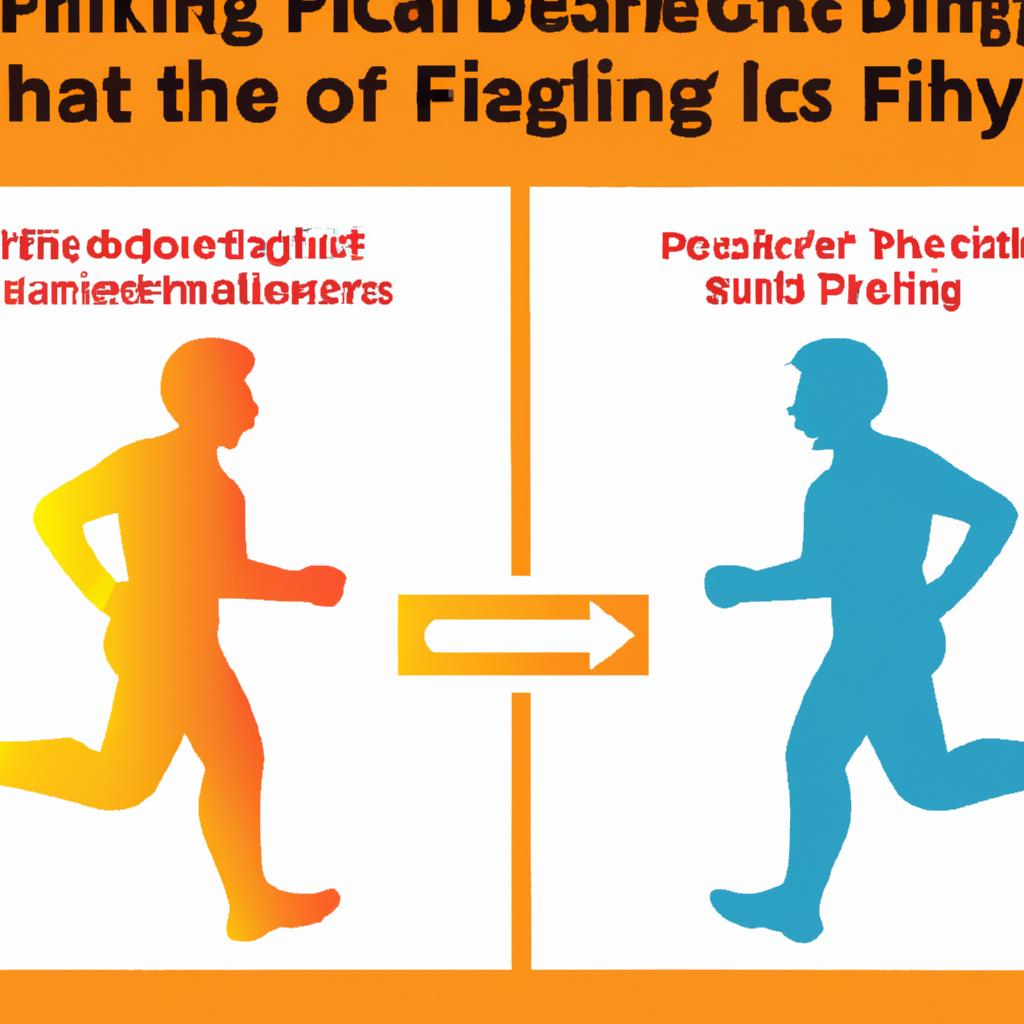Running to Shed Pounds: Unpacking the Science of Fat Burning Through Running
In the rhythmic symphony of footsteps pounding against pavement and the gentle rustle of leaves swaying in the breeze, running emerges not just as a form of exercise but as a compelling pathway to health and well-being. For countless individuals, slipping into their running shoes signals the start of a journey not only toward fitness but also toward weight loss and body transformation. Yet, behind the invigorating rush of endorphins and the satisfying weariness of tired muscles lies a complex science that governs fat burning and metabolic change.
In this exploration of running as a tool for shedding pounds, we will delve into the physiological mechanisms that make this ancient practice effective in burning fat and offer insights into how to maximize these benefits. Whether you’re a seasoned marathoner or a curious beginner, understanding the nuances of how running impacts our bodies can illuminate the path to achieving weight loss goals. Join us as we unpack the science of fat burning through running, revealing the secrets that lie beneath every stride taken.

The Metabolic Shift: How Running Enhances Fat Oxidation
Running doesn’t just torch calories; it fundamentally alters the way your body processes fats as fuel. During endurance activities, such as running, the body undergoes a metabolic shift that enhances fat oxidation. As your heart rate elevates, the muscles demand more energy, prompting the body to tap into fat stores for fuel rather than relying solely on carbohydrates. This evolutionary adaptation embraces several key components:
- Increased Mitochondrial Density: Running stimulates the production of mitochondria, the powerhouses of cells, leading to improved efficiency in burning fat.
- Enhanced Enzyme Activity: Regular running boosts the activity of enzymes responsible for mobilizing and breaking down fat, optimizing the oxidation process.
- Shifts in Hormonal Balance: Running triggers hormonal changes that promote fat utilization, especially during moderate-intensity exercise.
To illustrate the relationship between running duration and fat oxidation rates, consider the following table:
| Duration of Running | Fat Oxidation Rate (g/min) |
|---|---|
| 0-30 minutes | 0.15 |
| 30-60 minutes | 0.25 |
| 60+ minutes | 0.35 |
This metabolic adjustment underscores the importance of duration in running sessions, revealing how consistent training not only supports weight loss but also enhances the body’s ability to use fat efficiently as a primary fuel source.

Maximizing Your Miles: Tailored Strategies for Effective Fat Loss Run
To effectively harness the power of running for fat loss, consider implementing these tailored strategies. First and foremost, **focus on interval training**—this method incorporates bursts of high-intensity efforts followed by recovery periods, optimizing calorie burn and boosting metabolism. Additionally, **monitor your pace**; running at a moderate speed allows you to maintain endurance while entering the fat-burning zone. Incorporating **cross-training** activities such as cycling or swimming can also enhance overall fitness without overuse injuries. Pay attention to **nutrition**; a balanced diet rich in whole foods supports your running regimen, while keeping hydrated is key for optimal performance. Lastly, **set realistic goals** to maintain motivation and track progress, allowing for adjustments as needed. Here’s a quick reference table summarizing these strategies:
| Strategy | Description |
|---|---|
| Interval Training | Alternate between high and low intensity for maximum fat burning. |
| Pacing | Run at a steady, moderate pace to tap into fat reserves. |
| Cross-Training | Incorporate varied activities to prevent injury and enhance endurance. |
| Nutrition | Opt for whole foods while maintaining proper hydration levels. |
| Goal Setting | Establish achievable milestones to maintain focus and motivation. |
Final Thoughts
as we’ve explored the intricate relationship between running and fat burning, it’s clear that this vigorous activity is more than just a means to shed pounds; it serves as a catalyst for overall health and well-being. The science behind fat oxidation, metabolism, and hormonal responses reveals that each step taken on the pavement or trail echoes a commitment to one’s personal journey. However, it’s vital to remember that running is just one piece of the puzzle. Combining this invigorating exercise with a balanced diet and mindful lifestyle choices creates a holistic approach to achieving and maintaining weight loss.
While the path to fitness is often winding and unique for each individual, the simple act of lacing up your shoes and hitting the road can be empowering. As you embark on this journey, embrace the rhythm of your footsteps, the rush of endorphins, and the quiet moments of reflection. Whether you’re a seasoned marathoner or a newcomer taking your first jog, remember that every mile counts, and every effort matters. With patience and persistence, you can not only reach your weight loss goals but also discover a deeper connection to your body and a newfound appreciation for the journey itself. So, keep running, keep exploring, and let each stride propel you towards a healthier, happier you.









Leave a Reply